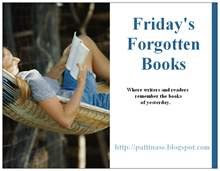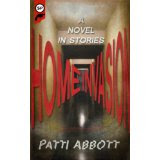
Joyce Carol Oates reading.
Back in the day, and make that day the seventies and eighties, the only bookstore available to us just outside Detroit was B.F. Daltons or Walden Books, some used bookstores and one or two indies on the other side of town. If we wanted to find some of the rarer books on our list, we drove an hour to Ann Arbor and visited the original Borders, which was the equivalent to a trip to Disneyland for us.
Perhaps it was unrealistic to expect that there was enough demand for books to have a Borders and a Barnes and Noble within five miles from us, as there is now. Is this part of the problem?
Not so much that people are reading less, but that we expected them to read more. We expected the public support a huge increase in both the number of books published and the bookstores themselves. We expected them to forsake library reading (our most common venue for books still) and buy books. Buy them from Amazon. Walmart, Costco, Target and the other online sites. Is this reasonable? Is it that our expectations were too big?














6 comments:
I just bought a documentary on DVD that I heard about on a podcast from Bookworm on KRCW. It's called "Paperback Dreams" and it's about independent bookstores and focuses on one in San Francisco and one in Berekeley and the problems/closures. There were some shocking (to me) statistics in there. They said that in a good year, the profit margin is only about 3%, which I find insane. Most people wouldn't even create a business with that low a profit margin. Between the documentary and the interview, some of the things I heard (and I may get some of these wrong) are that at the point in time when the chain stores started expanding and adding more and more stores, there was growth in the industry, but it was tiny compared to the growth in square footage that we saw with the huge B&N's, Borders, etc. They also said that big retailers, like Wal-Mart, Target, Costco, etc. that started selling books often sell them at a 40% discount, or cost in order to get people into the store buying other things. I think what we're seeing is the same thing that I see all around me. Businesses built up far more overhead than the market will support. I probably have 5 book stores within a 10 mile radius of my house and in the meantime, I'm buying the majority of my books on Amazon because it's cheaper and more convenient. By the same token, you can look around and see that in areas like mine, the "for lease" signs are flying up at an alarming rate where in high density areas there are four or five tanning salons, nail salons, massage therapy centers, etc. etc. where the population can really only support one. I think that the reality of the way we buy is that we really do have too many brick and mortar bookstores. Despite our best intentions to support the independents, the business case just isn't there anymore in many cases where price, selection and convenience are better in chains and on line.
And this coupled with a story on NPR on the decline in reading. Eighty percent of people never read or buy a book in a year. There are ways to remedy this, starting in the schools with teachers demanding real books instead of Wilkipedia for paper, real book reports again.
Let's campaign for "reading real books." I could get behind that.
Give a book to someone who doesn't read books day.
Good post, Patti. I'm like Lisa, I go to the places where I can get my books cheaper. Although I do buy the odd hardcover at regular price before the discounts are set. I frequent the Chapters-Indigo bookstore chain in Toronto and rarely into the smaller bookstores due to availability of local transportation.
Post a Comment